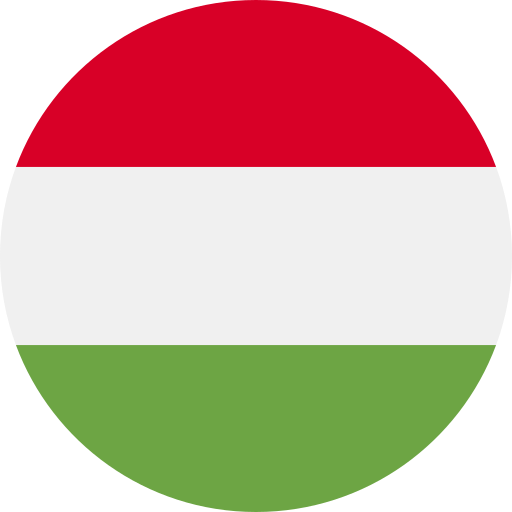Key Takeaways
- Rich Historical Context: Hungary’s media landscape has evolved from its first newspaper in 1780 through periods of censorship, shaping current storytelling practices.
- Diverse Contributions: Hungarian creators significantly influence global media across film, television, music, and art, enriching narratives with unique perspectives.
- Linguistic Impact: The distinct phonetic qualities of the Hungarian language enhance voiceovers and storytelling techniques, creating engaging content for international audiences.
- Cultural Exchange: Collaborations between Hungarian artists and global platforms foster intercultural dialogue and broaden the appreciation of Hungary’s heritage.
- Emerging Technologies: Advancements like VR and AR are transforming media production in Hungary, enabling more immersive storytelling experiences while increasing accessibility for creators.
- Global Collaborations: Partnerships with international networks provide opportunities for shared resources and funding, helping to elevate Hungarian media on the world stage while preserving its cultural identity.
Have you ever wondered how a small language like Hungarian could leave such a big mark on global media? It’s fascinating to see how this unique tongue, with its rich history and culture, has shaped storytelling across borders. From film and literature to journalism and social media, the influence of Hungarian is more profound than you might think.
As we dive into this topic, you’ll discover how Hungarian creators have pushed boundaries and inspired international audiences. Whether it’s through innovative filmmaking or thought-provoking journalism, their contributions are carving out a distinct space in the global narrative. Join me as we explore the captivating impact of Hungarian on today’s media landscape and uncover why it matters now more than ever.
Overview of Hungarian Media Landscape
The Hungarian media landscape has evolved significantly, reflecting both historical influences and contemporary trends. From its roots in traditional forms to the rise of digital platforms, Hungary’s media scene plays a vital role in shaping narratives worldwide.
Historical Context
Hungary boasts a rich media history that dates back centuries. The establishment of the first Hungarian newspaper in 1780 marked a pivotal moment, laying the groundwork for journalism and public discourse. Over time, various regimes influenced the direction of media, from censorship during communist rule to increased freedom after the fall of communism in 1989. This tumultuous history shaped not only how stories are told but also who gets to tell them.
Current Trends
Today, Hungary’s media landscape is characterized by rapid digitalization and diversification. Online platforms dominate content consumption, with streaming services and social media becoming essential outlets for creators. Voiceover work has gained traction as well; many Hungarian voice talents have found opportunities in dubbing foreign films or producing localized content for international audiences. These trends illustrate Hungary’s ongoing impact on global storytelling while showcasing its vibrant creative community eager to engage with broader markets.
Hungarian Contributions to Global Media
Hungarian creators have significantly enriched global media through their unique perspectives and talents. Their contributions span various fields, including film, television, music, and art.
Film and Television
Hungarian cinema showcases a blend of storytelling that captivates audiences worldwide. Directors like Béla Tarr and István Szabó have gained international acclaim for their thought-provoking narratives and artistic styles. Notably, the Hungarian film industry has produced award-winning films that explore complex themes, often resonating with universal experiences. Hungary’s influence extends to television as well; shows featuring Hungarian voice talent bring local stories to life for global viewers. These productions emphasize the power of cultural exchange in shaping entertainment.
Music and Art
Hungary’s musical landscape boasts a diverse range of genres from classical to contemporary pop. Composers like Franz Liszt and Béla Bartók have left indelible marks on classical music globally. In addition to traditional music forms, modern Hungarian artists continue to innovate, creating unique sounds that appeal internationally. Visual arts also play a significant role; Hungarian painters such as Victor Vasarely are recognized for their contributions to the Op Art movement, influencing artists around the globe.
Overall, the impact of Hungary on global media is profound and enduring. Whether through compelling films or innovative artworks, Hungarian creators consistently inspire audiences everywhere while enhancing cross-cultural dialogues in today’s interconnected world.
The Role of Hungarian Language in Media
Hungarian plays a vital role in global media, enriching diverse narratives and fostering cultural exchange. Its unique linguistic characteristics influence storytelling techniques and broaden audience perspectives.
Linguistic Influence
Hungarian’s distinct phonetic structure lends itself to expressive voiceovers. This language captures emotions and nuances that resonate with viewers, enhancing the overall impact of media projects. The rhythm and intonation present in Hungarian often create a captivating listening experience, making it ideal for various formats, including documentaries, animations, and advertising campaigns. Utilizing native speakers for voice talent ensures authenticity, engaging audiences who appreciate genuine representation in their content.
Cultural Exchange
Cultural exchange thrives through the use of Hungarian in international media. As you explore stories originating from Hungary, you’ll encounter rich themes that reflect its history and traditions. Collaborations between Hungarian creators and global platforms foster creativity while promoting intercultural dialogue. Voiceover artists skilled in both Hungarian and other languages bridge gaps between cultures, allowing stories to transcend borders effortlessly. This connection not only enriches content but also encourages appreciation for Hungary’s heritage among wider audiences around the world.
Case Studies of Hungarian Media Influence
Hungarian media has made notable strides on the global stage, demonstrating its unique ability to capture and convey stories that resonate across cultures.
Success Stories
Hungarian filmmakers have gained recognition for their compelling narratives. For instance, many documentaries featuring captivating subjects often employ skilled voice artists who bring the stories to life in multiple languages, enhancing accessibility. The use of local voice talent can deepen emotional connections with audiences worldwide. This approach not only amplifies the reach of these films but also showcases Hungary’s rich cultural tapestry.
In television, Hungarian productions frequently collaborate with international networks. These partnerships often highlight exceptional voice over talent that conveys local humor and drama effectively. Such collaborations illustrate how Hungarian media influences story arcs and character development in a way that’s relatable to diverse audiences.
Challenges Faced
Despite its successes, Hungarian media faces challenges in maintaining visibility on a crowded global platform. Limited resources can hinder production values; however, talented voice actors continue to elevate projects through their expertise. They utilize their skills to create high-quality content that competes internationally.
Additionally, political pressures may impact creative freedom within Hungary’s media landscape. Voiceover work provides an avenue for creators to express themselves while navigating these restrictions without compromising artistic integrity. Through innovative storytelling techniques and resilient talent, Hungary’s influence persists despite obstacles.
Understanding these dynamics helps appreciate how Hungarian media shapes global narratives while overcoming hurdles along the way. As you explore this vibrant landscape, consider how leveraging skilled voiceover professionals can enhance your own projects’ appeal on an international scale.
Future Directions for Hungarian Media
The future of Hungarian media promises exciting developments, especially with the integration of emerging technologies and global collaborations. These elements will shape how stories are told and shared worldwide.
Emerging Technologies
Emerging technologies play a crucial role in transforming how media is consumed and produced in Hungary. Virtual reality (VR) and augmented reality (AR) offer new avenues for storytelling, enabling creators to craft immersive experiences that engage audiences at a deeper level. Additionally, advancements in artificial intelligence (AI) streamline production processes, making it easier for content creators to experiment with innovative formats.
Hungarian voiceover talent stands to benefit significantly from these technological advances. With high-quality recording equipment and editing software available at lower costs, aspiring voice artists can produce professional-grade work from their own studios. This accessibility encourages creativity and allows more voices to be heard on the global stage.
Moreover, streaming platforms continue rising in popularity, allowing Hungarian productions to reach international viewers effortlessly. By embracing these technologies, Hungarian media can expand its influence while showcasing local narratives that resonate universally.
Global Collaborations
Global collaborations present an exciting opportunity for Hungarian media to thrive. Partnerships with international filmmakers and production companies enable the exchange of ideas and resources, enriching both local content creation and global storytelling perspectives.
Hungarian voice talent plays a vital role in these collaborations by lending authenticity to projects aimed at diverse audiences. When working alongside foreign creatives, local voice actors provide insights into cultural nuances that enhance character development and emotional depth within narratives.
Additionally, co-productions allow for shared funding opportunities that help overcome financial challenges faced by smaller markets. Through joint efforts with foreign partners, Hungary’s creative community can amplify its presence on the world stage while maintaining its unique identity.
As you explore potential projects or partnerships within the realm of media production or narration services, consider how leveraging emerging technologies and engaging in global collaborations could elevate your efforts while contributing to Hungary’s rich cultural tapestry.
Conclusion
Hungary’s influence on global media is both profound and multifaceted. As you explore its rich cultural contributions across various forms of storytelling, you’ll discover how Hungarian creators have shaped narratives and fostered intercultural connections.
The unique characteristics of the Hungarian language enhance emotional resonance in voiceovers and narrative delivery, making it an invaluable asset in international collaborations. Despite facing challenges, Hungary’s creative community continues to thrive through innovation and adaptability.
Looking ahead, the synergy between emerging technologies and global partnerships promises exciting opportunities for Hungarian media to further expand its reach. Embracing these trends will not only elevate local stories but also enrich the global media landscape with Hungary’s distinctive voice.
Frequently Asked Questions
What is the significance of the Hungarian language in global media?
The Hungarian language plays a vital role in global media by enriching narratives and fostering cultural exchange. Its unique phonetic structure enhances voiceovers and storytelling, making it appealing for documentaries, advertising, and other formats.
How has Hungarian media evolved over time?
Hungarian media has evolved significantly since the establishment of its first newspaper in 1780. It has faced challenges from various regimes affecting freedom but is now characterized by rapid digitalization and an increasing presence on online platforms.
Who are some notable Hungarian creators in film and music?
Notable Hungarian filmmakers include Béla Tarr and István Szabó, known for their compelling narratives. In music, renowned composers like Franz Liszt and Béla Bartók have made significant contributions to both classical and contemporary genres.
What challenges does the Hungarian media face today?
Hungarian media faces challenges such as limited resources, political pressures impacting creative freedom, and competition with international content. Despite these obstacles, talented voice actors continue to enhance projects globally.
How do emerging technologies influence Hungarian media?
Emerging technologies like virtual reality (VR), augmented reality (AR), and artificial intelligence (AI) are transforming how stories are produced and consumed in Hungary. These innovations allow for more immersive experiences and creative experimentation within the industry.
What role do collaborations play in enhancing Hungarian storytelling?
Global collaborations enrich local content creation by bringing diverse perspectives to storytelling. Partnerships with international filmmakers help amplify Hungary’s presence while preserving its unique identity through shared cultural insights provided by skilled voice talent.







